
Bf 110D-3

The Bf 110 series is well documented so I'm not going to go into a protracted history here but instead will concentrate on the specific variant and how it may have differed from earlier variants. While history tends to paint the Bf 110 as a failure based on its performance in the Battle of Britain, it really wasn't the aircraft that was a failure but the concept of a heavy fighter that failed and it wasn't just Germany that found this out as the concept of a heavy fighter was popular among a number of countries during the late 1930's. The Bf 110 was found to be useful in many roles and was in production and service for most of the war.
The
"D"
model came about when during the campaign in Norway it was found
the 110 had insufficient range to provide air cover for protracted
periods when providing air cover for convoys sailing along the
Norwegian coast. A 264 gallon auxiliary fuel tank was designed of
fabric covered plywood and attached to the belly of the aircraft. The
tank made the aircraft unwieldy and was intended to be jettisoned when
its contents had been used. Several C-3 variants were so equipped and
designated Bf 110D's. The tanks proved to be less than satisfactory
for
a number of reasons and alternative methods for auxiliary fuel were
worked up which provided wet points and shackles on the wing outboard
of the engine nacelles which could carry two jettison able 198 gallon
tanks. So equipped the designation became Bf 110D-1/R2. The D-3
variant
was intended specifically for long range shipping escort and could
carry either two 66 gallon or 198 gallon drop tanks and a
supplementary
oil tank beneath the fuselage. The extreme rear of the fuselage was
extended to provide storage space for a dingy and ETC 500 racks could
be
mounted beneath the fuselage.
The Kit
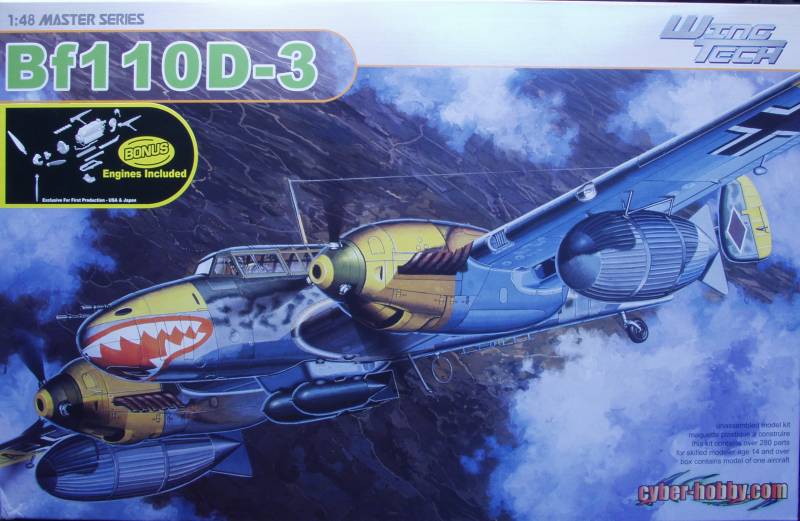
The Cyber-Hobby kit was released in 2010 and was the first kit bearing the Cyber-Hobby name. Cyber-Hobby is another brand name used by Dragon models and the kit is based on their 1/32 scale kit released under the Dragon name. The kit comes in a large, for the size of the aircraft, top open tray type box. The box while large is still packed with sprues as the kit contains 280 parts according to the box top, other sources report 369 parts, which again is a lot of parts for a 1/48 scale Bf 110. So one must realize there is a lot of detail here. Inside the box there are 15 sprues, counting two that were touted as a bonus on the first release for Japan and the US. Some of the sprues are duplicates. The larger sprues were individually bagged while some of the smaller ones were packed two to a bag. Also some of the sprues were detached, not in one piece as shown on the parts map but were all clearly labeled. The parts are molded in a medium gray color and feature recessed panel lines and recessed rivets and fastener detail. There are some raised detail where appropriate. The parts are cleanly molded and only found a couple hints of flash. Mold alignment is good and parting seams are fine. The surface is smooth but not quite glossy. Areas that are fabric like the control surfaces have a slight texture too them and rib tapes with some extremely fine stitching detail. Not sure how this will look under a coat of paint. Ejector pins marks appear to have been kept out of visible areas and I found no visible surface defects on any of the air frame parts.
Detail wise, this kit seems to have it all. The cockpit area is loaded with detail with over 70 parts and I think the after market folks would be hard pressed to better what is in the kit. One nice aspect of the kit is there are options for things to be opened or closed so you are not struggling trying to get panel doors to fit, you just choose the part that already has them closed. In a few case if you want them open, you need to do some cutting but the parts have been relieved on the back side to make this easier. The canopy is supplied as separate parts if you want in open or a single piece if you want it closed up. Optional parts allow you to display the leading edge slats open. (some cutting is required). The landing gear bays are well detailed as are the gear themselves. The wheels are in halves and not weighted. The control surfaces are molded separately. There is a wing spar included that should make setting the dihedral easy and make for a solid wing structure. The guns have been slide molded so have open ends. The propellers are multi part with excellent molded blades and hubs.Lets look at the parts.
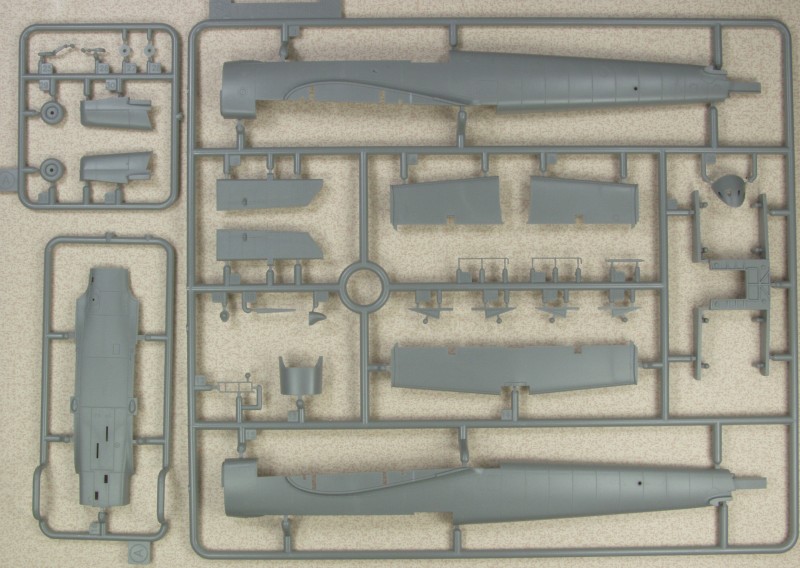
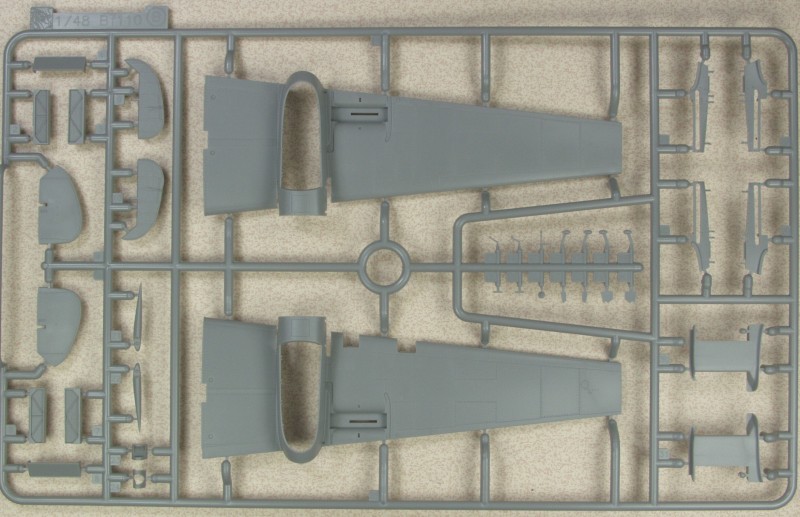
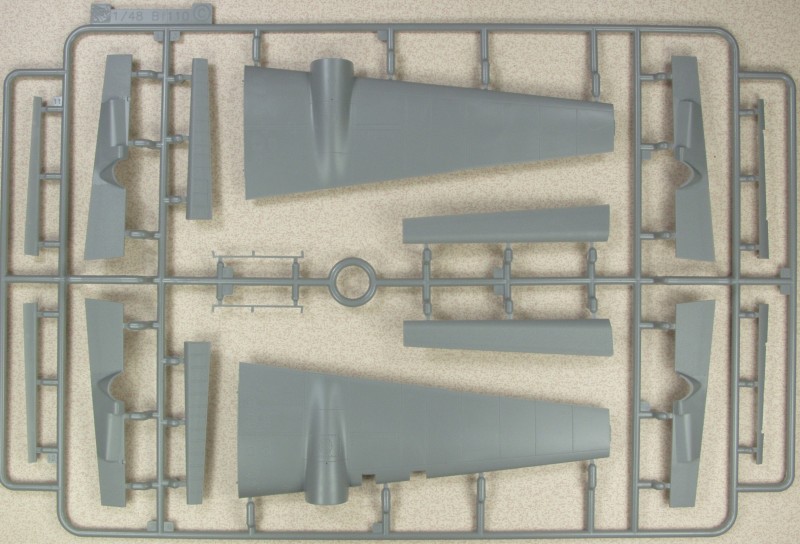
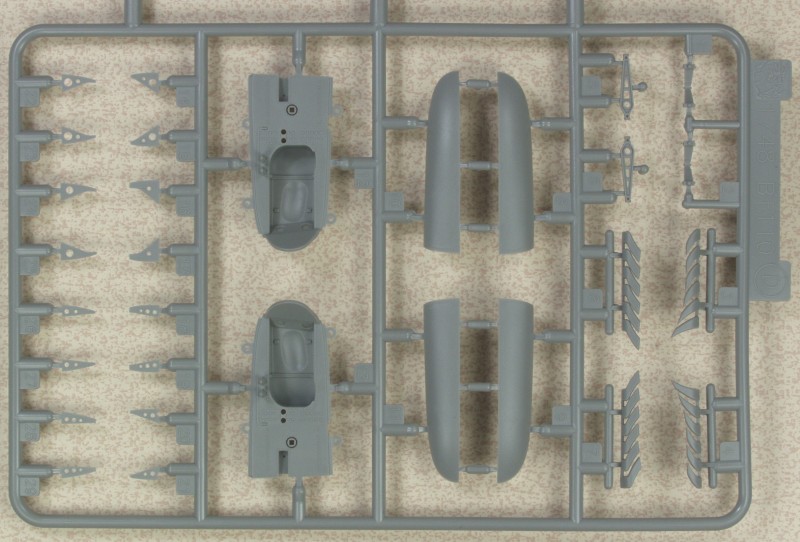
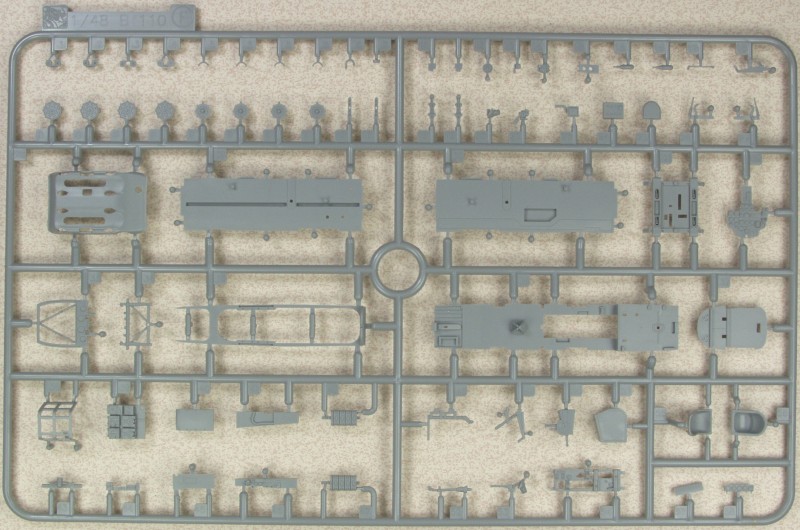
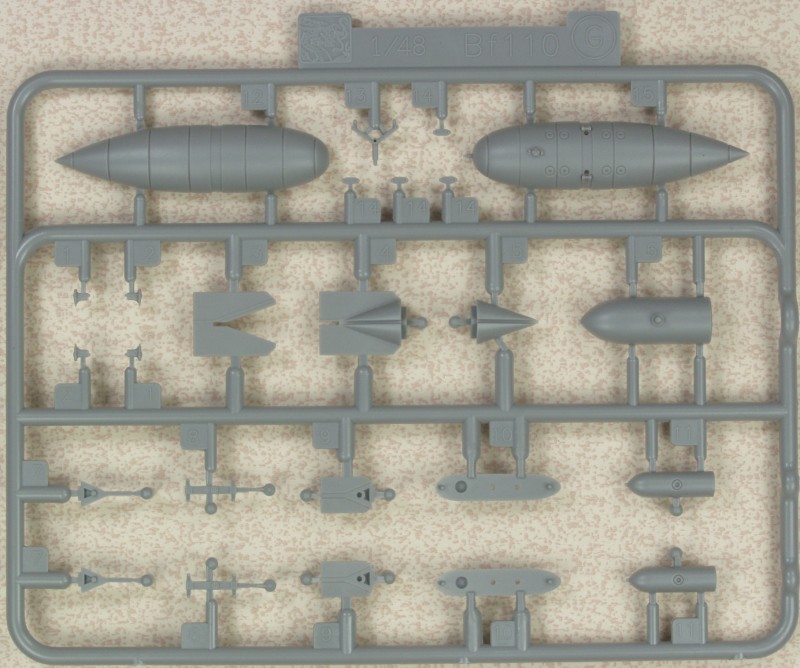
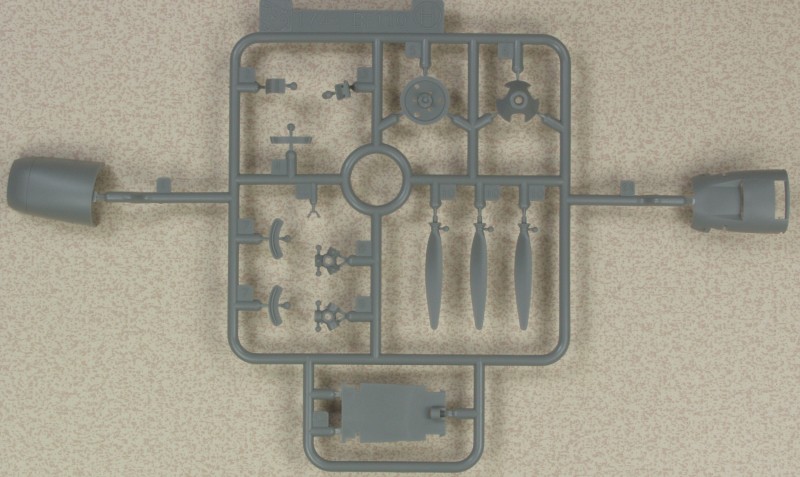
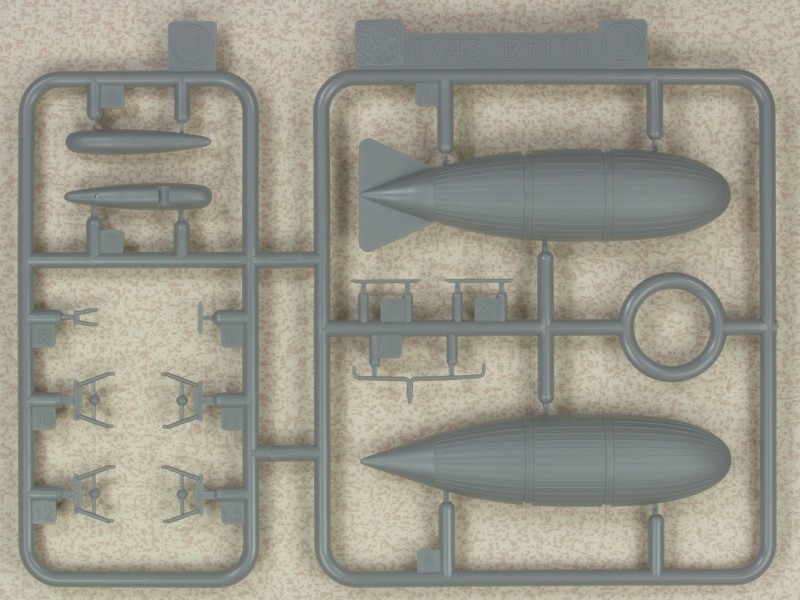
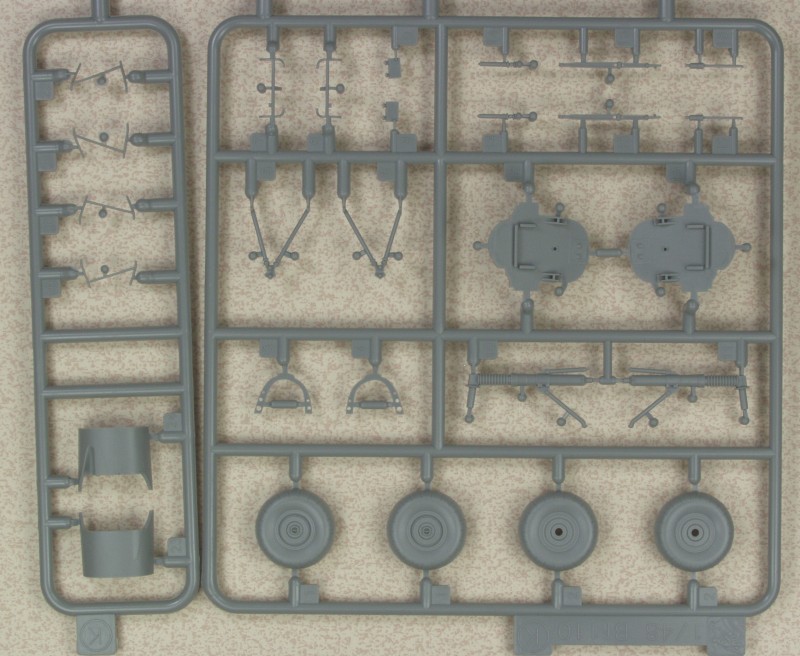
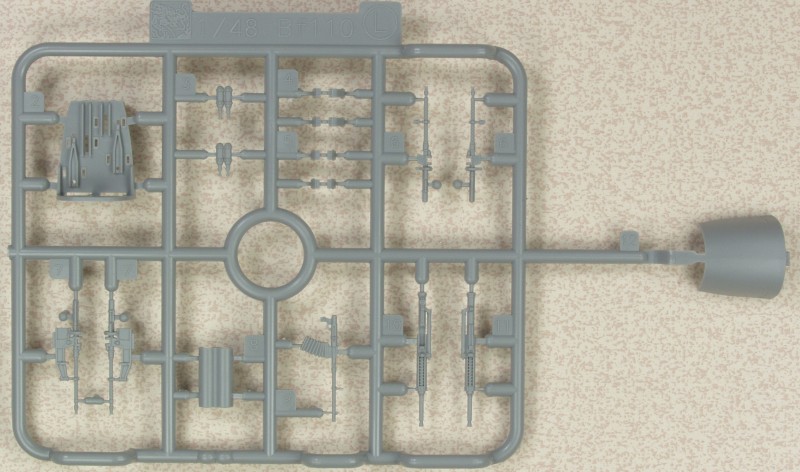
The nose, while shown on the parts map as being part of sprue L in my kit it was bagged separately.
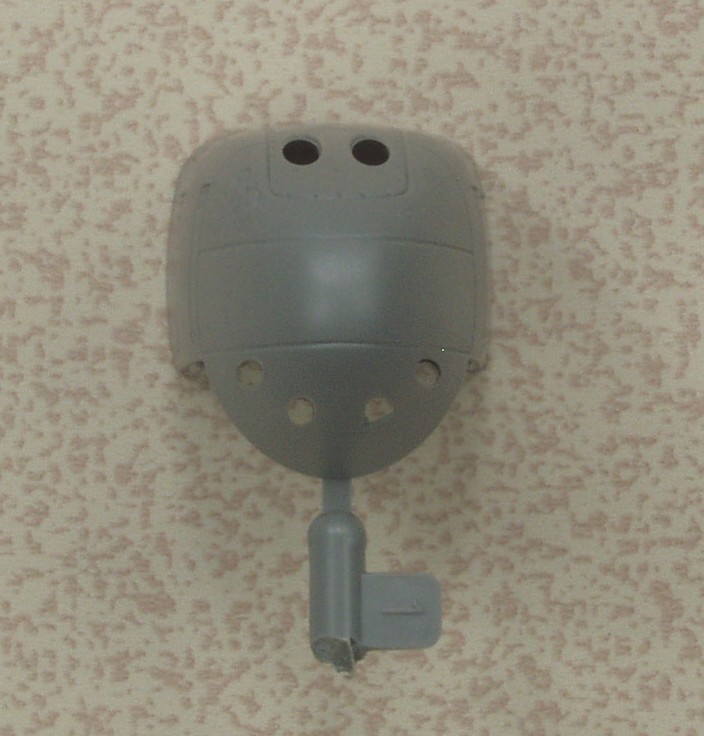
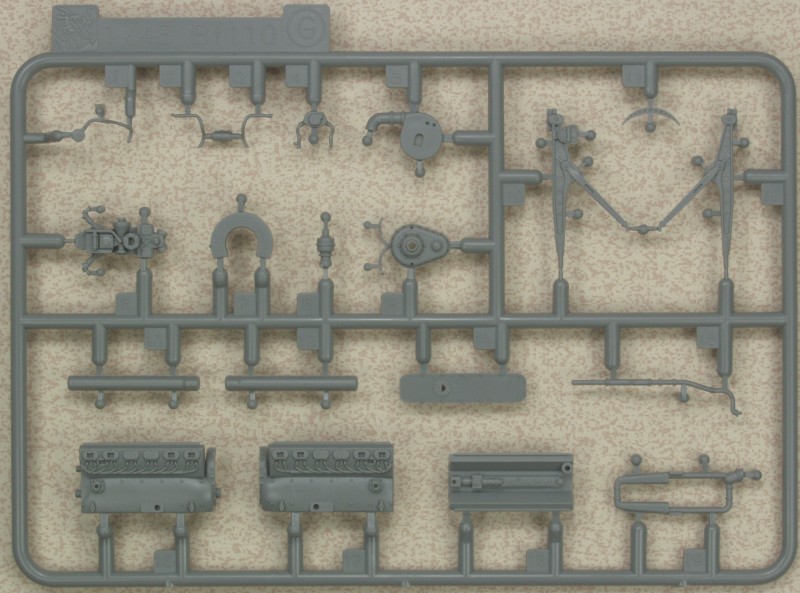
The clear parts are thin and clear with little if any optical distortion. Part are included to display the canopies open or closed.


A small fret of photo etch is provided, the two hoops I cut off are for the loop antenna, the rest are restraints for the pilot and gunner and the eyelets are for the cable that connects to the life raft compartment in the tail. A preformed piece of fine wire is supplied for that, in my kit it was in the sleeve with the decals.
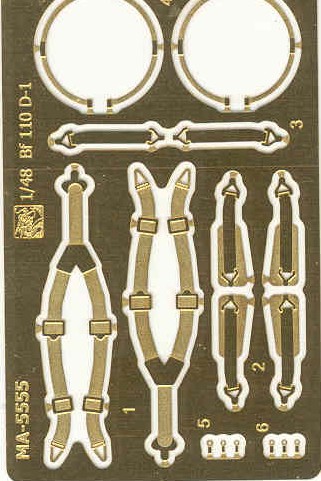
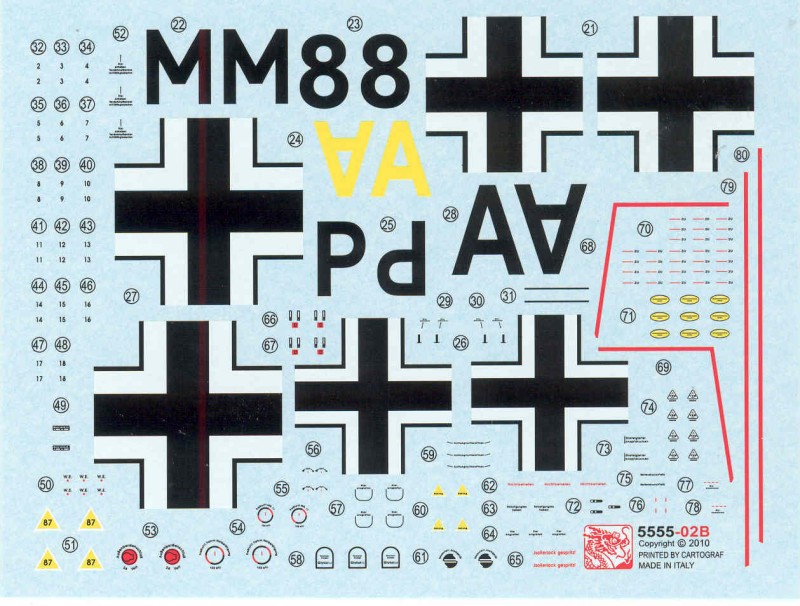
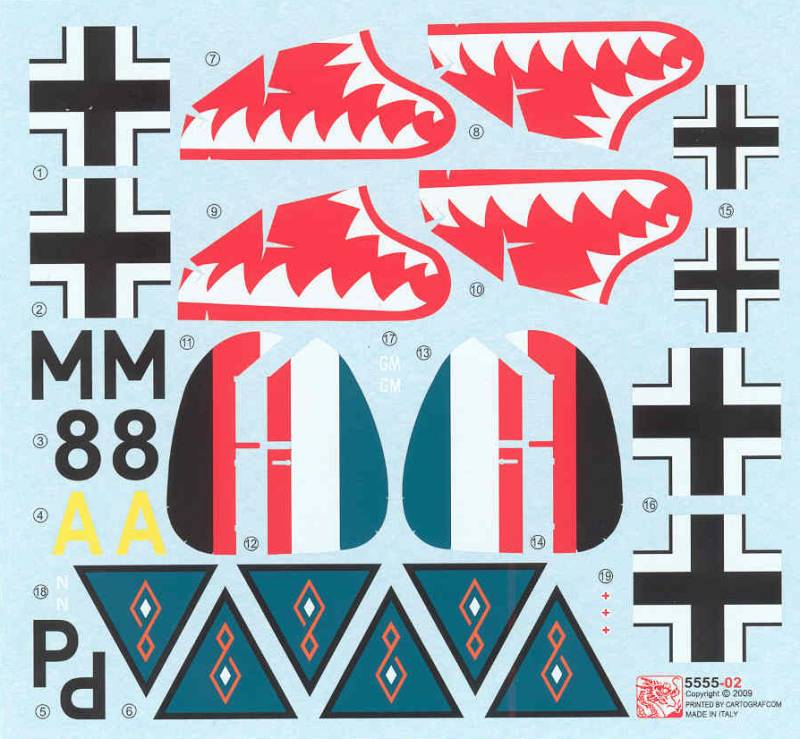
The instructions are a long page folded in quarters to make 8 panels. Like most instructions sets these days it has a parts map with parts not used marked in blue, an icon chart, a paint color chart with colors for GSI Creos Corp and Model Master paints. The assembly is broken down into ten steps across five panels. The last two panels have painting and marking instructions. The instructions appear clear enough to follow easily.
After Market Goodies
Personally I think one could get by without any but Eduard does make photo etch sets and masks and there are numerous decals sets available. Search your favorite online store or check Scalemates for what is available in after market sets. I did get a mask set (EX302) and the Zoom set (FE494), the Zoom set is shown below.
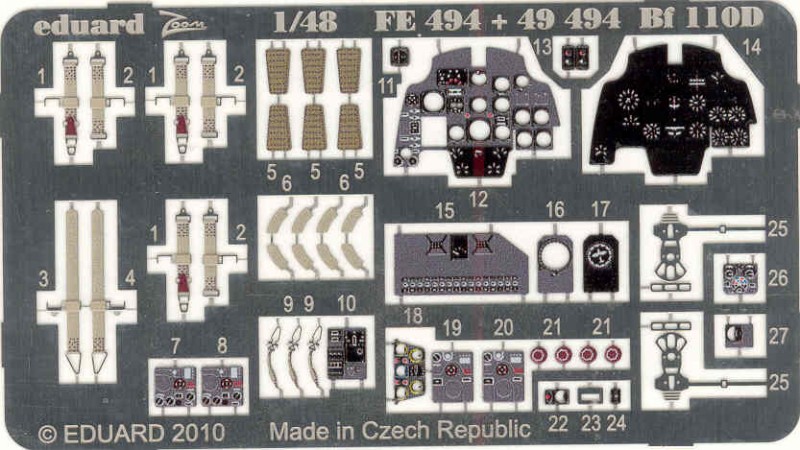
Conclusions
At the time this kit was released it was on the leading edge of what could be done in injection molded kits. The use of slide mold technology and amazing detail molded into some of the parts is very impressive. The Cyber-Hobby kits are by all accounts easier to build that the somewhat fiddly Eduard kits which were designed to have all the panels open. Because of the number of parts involved I would not recommend this kit to beginners but modelers with a little experience should have no major difficulties.
Links to kit build or reviews
In box reviews can be found here and here
References
Warplanes of the Third Reich but William Green
Back to the Bf 110 Series Page